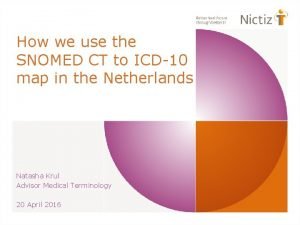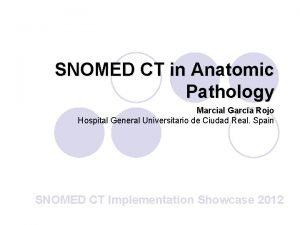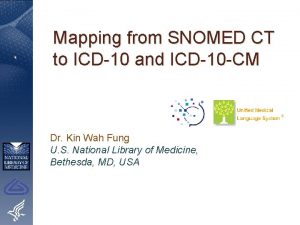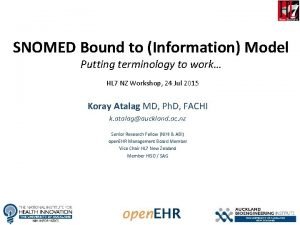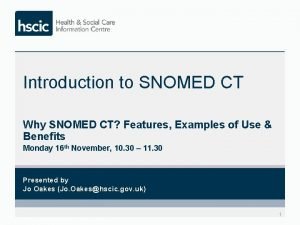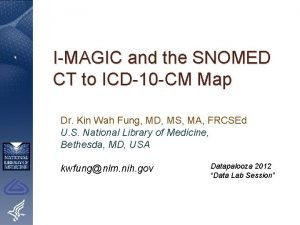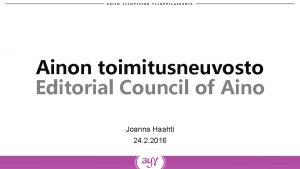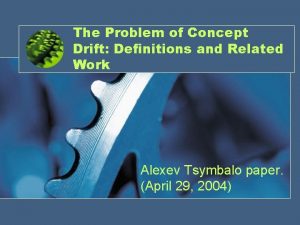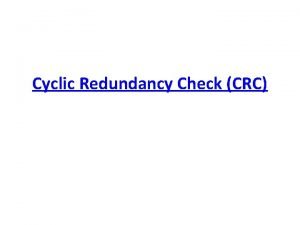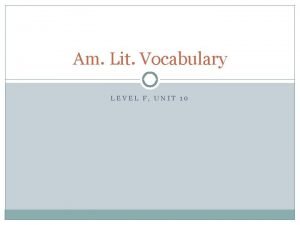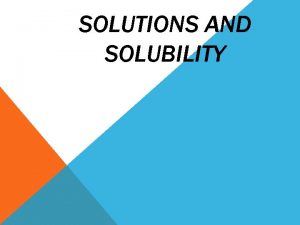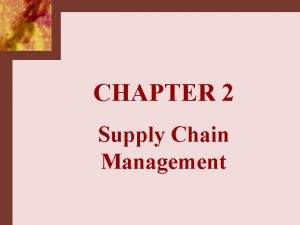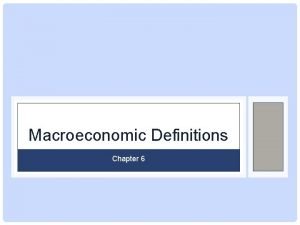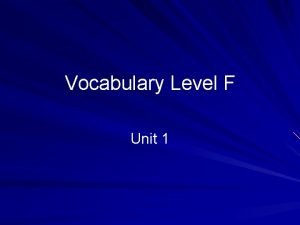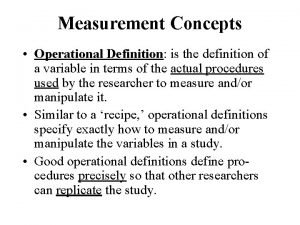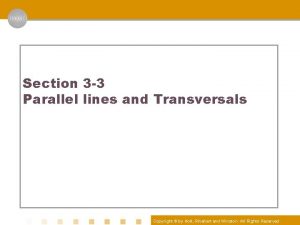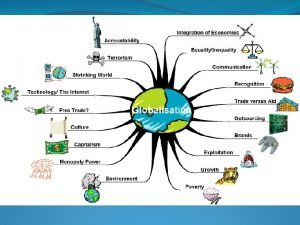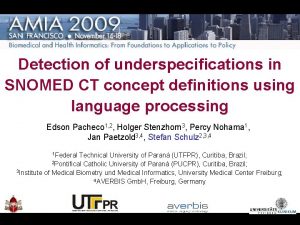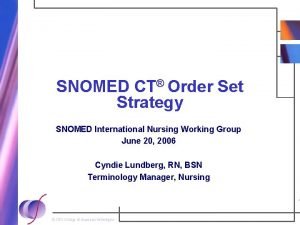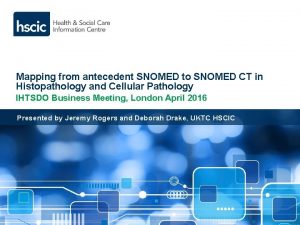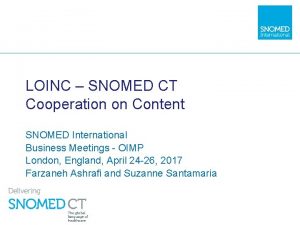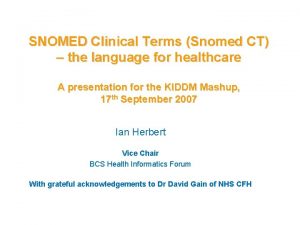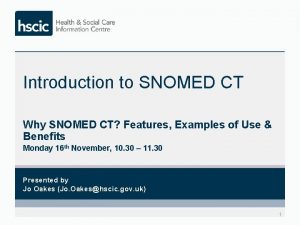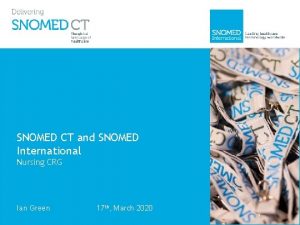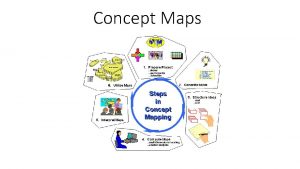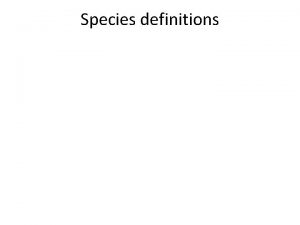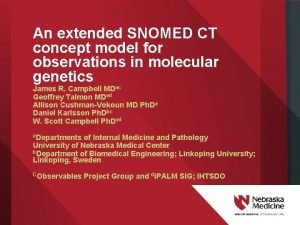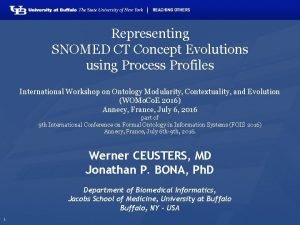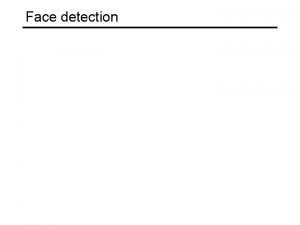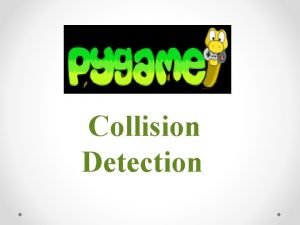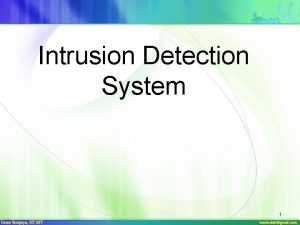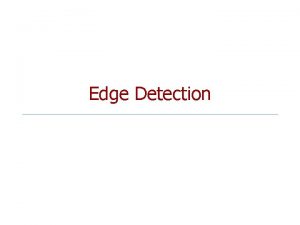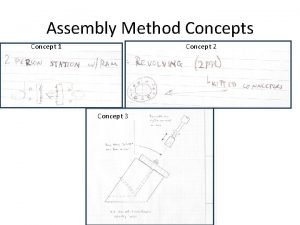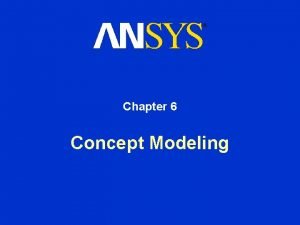Detection of underspecifications in SNOMED CT concept definitions




























- Slides: 28

Detection of underspecifications in SNOMED CT concept definitions using language processing Edson Pacheco 1, 2, Holger Stenzhorn 3, Percy Nohama 1, Jan Paetzold 3, 4, Stefan Schulz 2, 3, 4 1 Federal Technical University of Paraná (UTFPR), Curitiba, Brazil; 2 Pontifical Catholic University of Paraná (PUCPR), Curitiba, Brazil; 3 Institute of Medical Biometry und Medical Informatics, University Medical Center Freiburg; 4 AVERBIS Gmb. H, Freiburg, Germany Detection of underspecifications in SNOMED CT concept definitions using language processing

Background Methods Evaluation Results Conclusions SNOMED CT • “Standardized Nomenclature of Medicine - Clinical Terms” • Comprehensive clinical terminology ( > 300, 000 representational units) • Concepts are arranged in extensive taxonomic (is-a) hierarchies Detection of underspecifications in SNOMED CT concept definitions using language processing

Background Methods Evaluation Results Conclusions Taxonomic Structure of SNOMED CT Relation: is-a Detection of underspecifications in SNOMED CT concept definitions using language processing

Background Methods Evaluation Results Conclusions SNOMED CT • “Standardized Nomenclature of Medicine - Clinical Terms” • Comprehensive clinical terminology ( > 300, 000 representational units) • Concepts are arranged in extensive taxonomic (is-a) hierarchies • Cross-reference between concepts from several branches via semantic relations obeying description logics semantics Detection of underspecifications in SNOMED CT concept definitions using language processing

Background Methods Evaluation Results Conclusions Cross-reference between SNOMED CT concepts Detection of underspecifications in SNOMED CT concept definitions using language processing

Background Methods Evaluation Results Conclusions SNOMED CT semantics in a nutshell A: C: B, D: C B r S A A – is. A – C A–r–B A–s–D concept taxonomic parent attributes D A sub. Class. Of C and r some B and s some D EL+ description logics Detection of underspecifications in SNOMED CT concept definitions using language processing

Background Methods Evaluation Results Conclusions SNOMED CT • “Standardized Nomenclature of Medicine - Clinical Terms” • Comprehensive clinical terminology ( > 300, 000 representational units) • Concepts are arranged in extensive taxonomic (is-a) hierarchies • Cross-reference between concepts from several branches via semantic relations obeying description logics semantics • Burden of terminology content maintenance and quality assurance Detection of underspecifications in SNOMED CT concept definitions using language processing

Background Methods Evaluation Results Conclusions SNOMED CT • “Standardized Nomenclature of Medicine - Clinical Terms” • Comprehensive clinical terminology ( > 300, 000 representational units) • Concepts are arranged in extensive taxonomic (is-a) hierarchies • Cross-reference between concepts from several branches via semantic relations obeying description logics semantics • Burden of terminology content maintenance and quality assurance • To be supported by automated approaches Detection of underspecifications in SNOMED CT concept definitions using language processing

Background Methods Evaluation Results Conclusions Looking for underspecifications of cross-linkage • Nearly half (45. 2%) of the SNOMED CT concepts (132, 125) have no attributes. • Textual descriptions suggest composed meanings • Examples: – Cerebral function • only related to its parent Nervous system function • expected relation with Brain structure missing – Hepatitis notification • only related to its parent Disease notification • expected relation with Inflammatory disease of liver missing Detection of underspecifications in SNOMED CT concept definitions using language processing

Background Methods Evaluation Results Conclusions Automatic suggestion of attributes • Source: 01/2009 release of SNOMED CT Detection of underspecifications in SNOMED CT concept definitions using language processing

Background Methods Evaluation Results Conclusions Automatic suggestion of attributes • Source: 01/2009 release of SNOMED CT • Algorithm: 1. Identify non-attributed concepts Detection of underspecifications in SNOMED CT concept definitions using language processing

Background Methods Evaluation Results Conclusions Select non-attributed SNOMED CT concepts Detection of underspecifications in SNOMED CT concept definitions using language processing

Background Methods Evaluation Results Conclusions Select non-attributed SNOMED CT concepts Detection of underspecifications in SNOMED CT concept definitions using language processing

Background Methods Evaluation Results Conclusions Automatic suggestion of attributes • Source: 01/2009 release of SNOMED CT • Algorithm: 1. Identify non-attributed concepts 2. Extract concept names Detection of underspecifications in SNOMED CT concept definitions using language processing

Background Methods Evaluation Results Conclusions Extract names of non-attributed concepts “notification of disease” “notification of AIDS” “hepatitis notification” Detection of underspecifications in SNOMED CT concept definitions using language processing

Background Methods Evaluation Results Conclusions Automatic suggestion of attributes • Source: 01/2009 release of SNOMED CT • Algorithm: 1. Identify non-attributed concepts 2. Extract concept names 3. Perform semantic abstraction from word to sets of morphosemantic identifiers (MIDs) Detection of underspecifications in SNOMED CT concept definitions using language processing

Background Methods Evaluation Results Conclusions Perform morphosemantic abstraction Using Morpho. Saurus* morphosemantic indexing “notification of disease” #report #disease “notification of AIDS” #report #aids “hepatitis notification” #liver #inflamm #report *Markó K, Schulz S, Hahn U: Morpho. Saurus - Design and Evaluation of an Interlingua-based, Cross-language Document Retrieval Engine for the Medical Domain. Meth Inf Med 4/2005(44): 537 -545. Detection of underspecifications in SNOMED CT concept definitions using language processing

Background Methods Evaluation Results Conclusions Automatic suggestion of attributes • Source: 01/2009 release of SNOMED CT • Algorithm: 1. Identify non-attributed concepts 2. Extract concept names 3. Perform semantic abstraction from word to sets of morphosemantic identifiers (MIDs) 4. Compare MID sets between children and parents and reduce child sets Detection of underspecifications in SNOMED CT concept definitions using language processing

Background Methods Evaluation Results Conclusions Automatic suggestion of attributes • Source: 01/2009 release of SNOMED CT • Algorithm: 1. Identify non-attributed concepts 2. Extract concept names 3. Perform semantic abstraction from word to sets of morphosemantic identifiers (MIDs) 4. Compare MID sets between children and parents and reduce child sets 5. Match reduced child set against MID representations of all SNOMED descriptions Detection of underspecifications in SNOMED CT concept definitions using language processing

Background Methods Evaluation Results Conclusions Matching heuristics • For the FSN MID set of every non-attributed concept: – remove MID that occurs in any of this concept’s parents – check whether the remainder set coincides with the MID representation of some other SNOMED CT concept, considering all descriptions (FSNs, PTs, synonyms) – consider this concept a refinement candidate SNOMED description FSN: “notification of disease” FSN: “hepatitis notification” “inflammatory FSN: disease of liver” = SYN: “hepatitis” MID set #report #disease #liver #inflamm #report #inflamm #disease #liver #inflamm Detection of underspecifications in SNOMED CT concept definitions using language processing

Background Methods Evaluation Results Conclusions Automatic suggestion of attributes • Source: 01/2009 release of SNOMED CT • Algorithm: 1. Identify non-attributed concepts 2. Extract concept names 3. Perform semantic abstraction from word to sets of morphosemantic identifiers (MIDs) 4. Compare MID sets between children and parents and reduce child sets 5. Match reduced child set against MID representations of all SNOMED descriptions 6. Suggest candidates for refining attributes Detection of underspecifications in SNOMED CT concept definitions using language processing

Background Methods Evaluation Results Conclusions Addition of refinement candidate “notification of disease” “inflammatory disease of liver” = “hepatitis” #liver #inflamm #report #disease “hepatitis notification” #liver #inflamm #report *Markó K, Schulz S, Hahn U: Morpho. Saurus - Design and Evaluation of an Interlingua-based, Cross-language Document Retrieval Engine for the Medical Domain. Meth Inf Med 4/2005(44): 537 -545. Detection of underspecifications in SNOMED CT concept definitions using language processing

Background Methods Evaluation Results Conclusions Evaluation Methodology • For each of 14 SNOMED subhierarchies: random sample of 20 underspecified concepts, compared to attribute refinement candidate proposed by the system • For each of the sample concept verify 1. whether this concept should be refined 2. whether one of the suggested refinement candidates can be plausibly used for refinement. • Performed by two domain experts. Double rating for interrater agreement measurement: 25% Detection of underspecifications in SNOMED CT concept definitions using language processing

Background Methods Evaluation Results Conclusions Results of retrieval experiments Detection of underspecifications in SNOMED CT concept definitions using language processing

Background Methods Evaluation Results Conclusions Results of retrieval experiments Active Concepts SNOMED hierarchies Organism Substance body structure qualifier value observable entity Finding physical object morphologic abnormality Occupation Product Event Disorder Procedure Others TOTAL 31840 23554 25637 8823 7885 32780 4408 Non-attributed Concepts n % Refinement candidates n % 31840 23554 22386 8823 7885 5356 4408 100. 0 87. 3 100. 0 16. 3 100. 0 4973 8627 15076 3533 3647 2253 1339 15. 6 36. 6 58. 8 40. 0 46. 3 6. 9 30. 4 4297 4289 3843 19310 3541 3578 3529 63874 2812 47764 2256 14511 7603 292104 132125 99. 8 100. 0 18. 3 98. 6 4. 4 4. 7 52. 4 45. 2 2164 1330 686 447 1080 1001 2396 48552 50. 4 34. 6 3. 6 12. 5 1. 7 2. 1 16. 5 16. 6 Sample based Analysis of estimation samples(n=20) refinecorrect refinable with correct ment suggest concepts suggestjustified ions 0% 0% 0 0 55% 35% 4700 3000 5% 0% 800 0 0% 0% 0 0 70% 50% 2600 1800 90% 75% 2000 1700 85% 80% 1100 80% 75% 100% 85% 90% 85% 75% 60% 10% 60% 45% 60% 65% 60% 1700 1000 700 400 1000 900 18700 1300 100 400 200 600 700 1400 12300 Detection of underspecifications in SNOMED CT concept definitions using language processing

Background Methods Evaluation Results Conclusions Results • Interrater agreement (Kohen’s kappa): – A concept should be refined: 0. 55 (low !) – There is a proposed refinement candidate: 0. 74 • Estimation: approximately 18, 000 SNOMED CT concepts can be refined. • Problematic suggestions: – Macaroni for Macaroni maker – Canada for Salmonella canada – Acyl carnitine for Acylcarnitine hydrolase – First for Female first cousin (already fully defined by the intersection of First cousin and Female cousin) Detection of underspecifications in SNOMED CT concept definitions using language processing

Background Methods Evaluation Results Conclusions • Many SNOMED CT concepts are underdefined and can / should be refined • The proposed methodology was useful to detect underspecifications • Large difference between SNOMED hierarchies re harvesting and approval of refinement candidates • “Grey areas” – many proposed refinements are debatable – only part of refinement candidates not retrieved due to restrictions of the methodology • Should be considered for future SNOMED CT editing policies Detection of underspecifications in SNOMED CT concept definitions using language processing

Acknowledgements: Thank You! Contact: CNPq, Brazil: 550830/2005 -7 Stefan Schulz http: //purl. org/steschu BMBF-IB, Germany: BRA 05/022 Detection of underspecifications in SNOMED CT concept definitions using language processing
 Benign rolandic epilepsy icd 10
Benign rolandic epilepsy icd 10 Snomed
Snomed Icd 10 to snomed
Icd 10 to snomed Ana tomic notar
Ana tomic notar Loinc snomed
Loinc snomed Snomed to icd 10
Snomed to icd 10 Nzulm
Nzulm Soe snomed
Soe snomed Snomed to icd 10
Snomed to icd 10 Snomed ct editorial guide
Snomed ct editorial guide The problem of concept drift: definitions and related work
The problem of concept drift: definitions and related work It is considered the central to developing a concept paper.
It is considered the central to developing a concept paper. Crc error detection
Crc error detection Real self and ideal self similarities
Real self and ideal self similarities Pengertian marketing concept
Pengertian marketing concept Elements of a story definition
Elements of a story definition Vocab level f unit 10
Vocab level f unit 10 Definitions of solution
Definitions of solution Total cost concept in supply chain management
Total cost concept in supply chain management Habit 7 sharpen the saw worksheet
Habit 7 sharpen the saw worksheet Macroeconomic definitions
Macroeconomic definitions Vocabulary workshop level f unit 1
Vocabulary workshop level f unit 1 History of microteaching in india
History of microteaching in india Impact news value
Impact news value Operational definition example
Operational definition example Cima defines management accounting as
Cima defines management accounting as Definition of same side interior angles
Definition of same side interior angles Difference between micro teaching and traditional teaching
Difference between micro teaching and traditional teaching Draw a diagram or image that depicts globalization
Draw a diagram or image that depicts globalization


